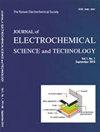锂硫电化学电池的应用与挑战
IF 3
4区 工程技术
Q3 ELECTROCHEMISTRY
Journal of electrochemical science and technology
Pub Date : 2023-06-29
DOI:10.33961/jecst.2023.00199
引用次数: 0
摘要
本文介绍了锂硫(li -硫)储能电池的应用,同时展示了几种技术的优缺点,以减轻其电化学挑战。由于Li-S电池成本低、比容量高、重量轻,无人机、电动汽车和电网规模的储能系统是其主要应用领域。然而,多硫化物穿梭效应、低电导率和低库仑效率是锂硫电池面临的主要挑战,它们会导致电池体积变化大、枝晶生长和循环性能受限。固态电解质、界面间层和电催化剂是缓解这些挑战的有希望的方法。此外,纳米材料具有改善锂硫电池动力学反应的能力,基于纳米颗粒的几种特性,可以固定阴极中的硫,稳定阳极中的锂,同时控制体积增长。考虑到基于可再生能源的环境友好型系统,Li-S储能技术能够满足未来市场对高功率密度、低成本的先进可充电电池的需求。本文章由计算机程序翻译,如有差异,请以英文原文为准。
Applications and Challenges of Lithium-Sulfur Electrochemical Batteries
This paper presents applications of lithium-sulfur (Li-S) energy storage batteries, while showing merits and demerits of several techniques to mitigate their electrochemical challenges. Unmanned aerial vehicles, electric cars, and grid-scale energy storage systems represent main applications of Li-S batteries due to their low cost, high specific capacity, and light weight. However, polysulfide shuttle effects, low conductivities, and low coulombic efficiencies signify key challenges of Li-S batteries, causing high volumetric changes, dendritic growths, and limited cycling performances. Solid-state electrolytes, inter-facial interlayers, and electrocatalysts denote promising methods to mitigate such challenges. Moreover, nanomaterials have capability to improve kinetic reactions of Li-S batteries based on several properties of nanoparticles to immobilize sulfur in cathodes, stabilizing lithium in anodes while controlling volumetric growths. Li-S energy storage technologies are able to satisfy requirements of future markets for advanced rechargeable batteries with high-power densities and low costs, considering environmentally friendly systems based on renewable energy sources.
求助全文
通过发布文献求助,成功后即可免费获取论文全文。
去求助
来源期刊

Journal of electrochemical science and technology
ELECTROCHEMISTRY-
CiteScore
6.30
自引率
8.10%
发文量
44
期刊介绍:
Covering fields:
- Batteries and Energy Storage
- Biological Electrochemistry
- Corrosion Science and Technology
- Electroanalytical Chemistry and Sensor Technology
- Electrocatalysis
- Electrochemical Capacitors & Supercapcitors
- Electrochemical Engineering
- Electrodeposition and Surface Treatment
- Environmental Science and Technology
- Fuel Cells
- Material Electrochemistry
- Molecular Electrochemistry and Organic Electrochemistry
- Physical Electrochemistry
- Solar Energy Conversion and Photoelectrochemistry
 求助内容:
求助内容: 应助结果提醒方式:
应助结果提醒方式:


